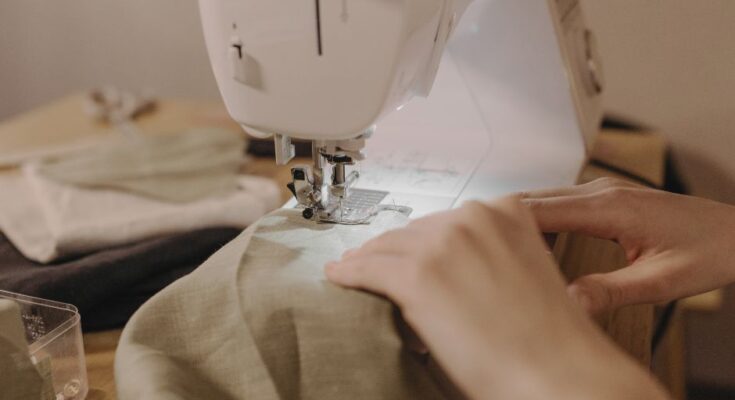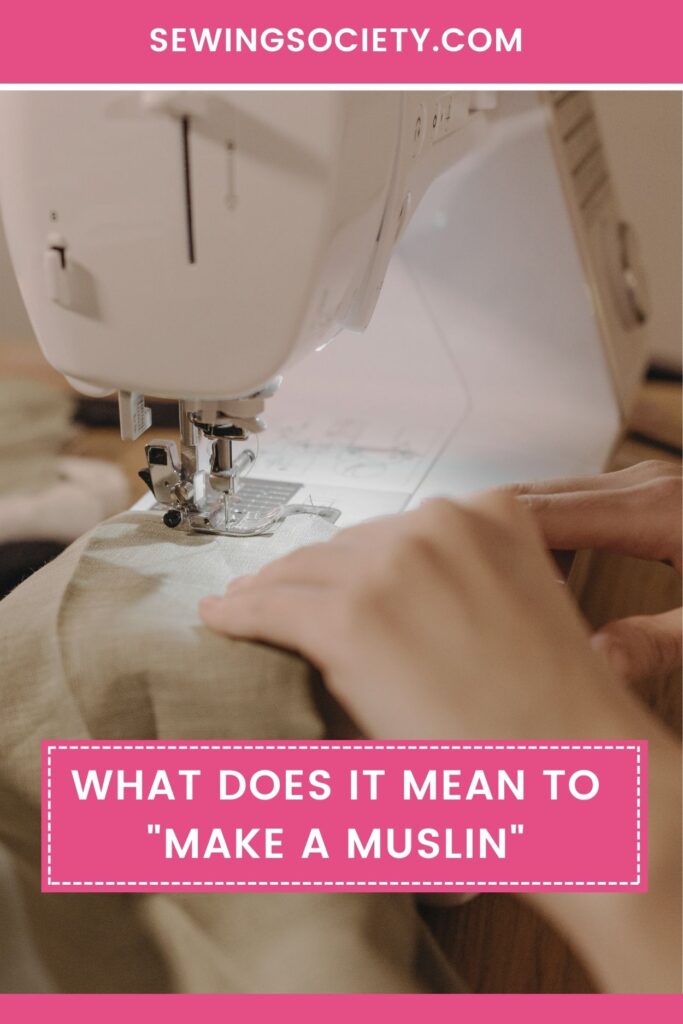Disclosure: This post may contain affiliate links. I earn a small commission when you click a link and make a purchase. Thanks for supporting SewingSociety.com!
Have you ever heard someone say they’re going to make a muslin? It’s one of those sewing terms that can be confusing if you’ve never heard it before. ‘Muslin’ is a type of fabric, but it’s also a term people use to say they are going to make a test garment.
When you’re worried that a pattern won’t fit right, or you want to practice before using your good fabric, you can make a muslin first. A lot of the time this test garment is actually made with muslin fabric… hence the name.
Muslin is one of the least expensive woven fabrics you can buy, making it ideal for test garments you don’t plan to wear.
A Closer Look at Muslin Fabric
Muslin fabric comes in various weights, from sheer and gauzy to heavy and opaque. It is soft to the touch, breathable, absorbent, and has no stretch.
Most muslin fabric is unbleached, but you can find it in black and white varieties, too. It is known for its affordability, not its quality… I like to buy cheap muslin fabric by the bolt for test garments. You can typically find it for under $5 per yard.
What Is Muslin Fabric Used For?
Muslin is a versatile fabric with many uses. Most people don’t use the unbleached form for finished garments, but it can be dyed and used in a similar way to other cotton fabrics. Here’s a list of ways muslin fabric is typically used:
- Test Garments: I already mentioned that test garments are sometimes called “muslins.” You can use muslin fabric to test the fit of a particular pattern and make adjustments before making a garment. The one caveat is that you can only use muslin fabric for testing patterns that require woven fabric.
- Mock-up Designs: Pattern makers often begin their design process with muslin fabric because it is so inexpensive and does not tear like pattern paper. They can drape the fabric directly onto a mannequin.
- Linings and Interfacings: Because muslin fabric is breathable, it is suitable for adding durability and support to garments in the form of linings and interfacings. It can even be used to shape and reinforce parts of a garment, such as the collar or cuffs.
Why You Should Make a Muslin (Test Garment)
I must admit, I rarely make muslins anymore because I feel confident using patterns and making fit adjustments without “practicing” first. However, I think learning how to make a muslin is very helpful for beginners. It removes the scare factor of cutting into fabric, and when you’re done making a muslin, you can confidently cut into your nice fabric and make a finished garment that you know you will love.
If you like the idea of sewing test garments, grab yourself a bolt of muslin fabric. It’s so inexpensive, you won’t have to worry about wasting it.
Share this post on Pinterest!






Thank you for your article! It’s very useful! I saw in Instagram a lot os bloggers call their test garments as a “mock up”. Is it also right? Or maybe there’s some difference between these meanings?
Yes, “mock up” is correct. “Muslin” is just another term you can use.